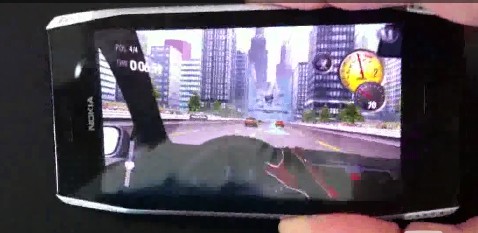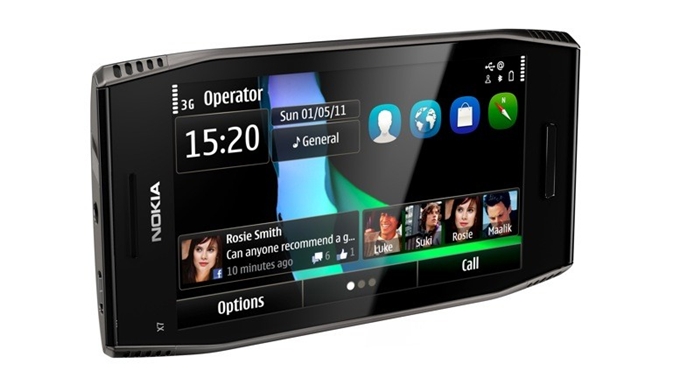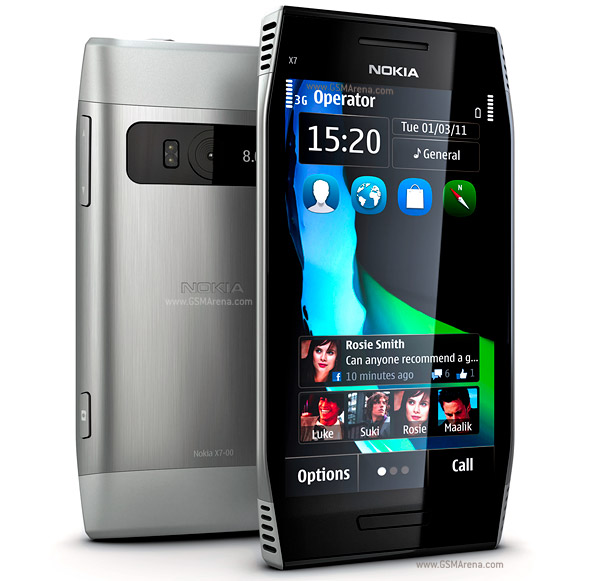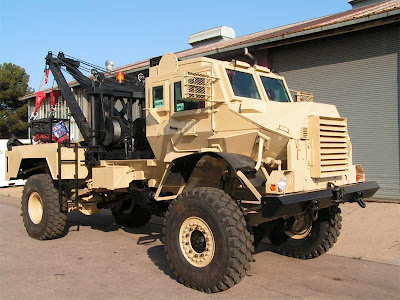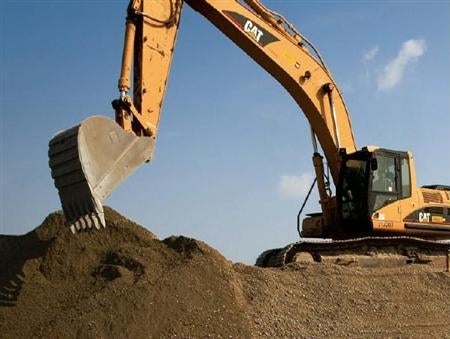On April 5, 2008, Facebook pre-released Facebook Chat. As of April 23, 2008, Facebook Chat was released to the entire Facebook user base. Users may chat with their Facebook friends on a one-to-one basis, or a user may chat with multiple friends simultaneously through the groups feature. Instant messaging clients that currently support Facebook Chat include AOL Instant Messenger, eBuddy, Flock, Miranda IM, Trillian, Empathy, Digsby, Pidgin, Adium, Nimbuzz, FIM (Windows Mobile / Windows Phone 7), Palringo (Windows Mobile), Meebo, Tokbox as well as QIP Infium with a Firefox plugin. Windows Live Messenger 2011 (Wave 4) can connect to Facebook as well. Facebook Chat can also be run on the desktop using Gabtastik, a dedicated web chat browser. Facebook Chat can also be run on the iPhone using Facebook Chat for iPhone app.Facebook also released the official app for iPad. On May 13, 2008, a Facebook developer announced that they are working on XMPP support, allowing hundreds of instant messaging clients to interoperate with the service; this functionality became operational on February 10, 2010.
Facebook Credits are a virtual currency you can use to buy gifts, and virtual goods in many games and applications on the Facebook platform. As of July 2010, users of Facebook can purchase Facebook credits in Australian Dollars, British Pound, Canadian Dollars, Chilean Peso, Colombian Peso, Danish Krone, Euro, Hong Kong Dollar, Japanese Yen, Norwegian Krone, Swedish Krona, Swiss Franc, Turkish Lira, US Dollars, and Venezuelan Bolivar. Facebook credits can be used on many popular games such as Happy Aquarium, Happy Island, Zoo Paradise, Happy Pets, Hello City,It Girl FarmVille, and Mafia Wars.
Friend means "to send a friend request on Facebook." It is possible in Facebook's friend settings to remove someone from the Friend status, which is referred to as "Unfriend" by Facebook, or also "De-Friend". "Unfriend" was New Oxford American Dictionary's word of the year in 2009.
Facebook profiles may be set by a user to greatly restrict access to those users who are not "friends," for example, blocking access to photos of that person and contact information. After a person accepts a friend request, the new "friend" then has much greater access to that person's profile information.
On April 25, 2011, Facebook announced a pilot program called Deals, which offers online coupons and discounts from local businesses. Facebook initially released Deals as a "test" in five cities: Atlanta, Austin, Dallas, San Diego and San Francisco with the hope of expanding. This new offering is a direct competitor to other social commerce sites such as LivingSocial and Groupon for online coupons and deals-of-the-day. Facebook users will be able to use Facebook Credits to purchase vouchers that can be redeemed for real goods and services.
On August 13, 2010 Facebook launched a new service called "'Facebook Live'", a live streaming video channel that is intended to keep Facebook users updated to what is happening on the social networking site. The service, powered by Livestream, will feature videos from Facebook staff members and celebrity interviews, but not designed for Facebook users to showcase their own videos. All the content shown on Facebook Live will have some tie-in with Facebook products, features, or how people are using the site. Facebook said this is not an opening to get them into the video distribution space. The first official guest was America Ferrera, the leading actress in the television series Ugly Betty. She discussed her new independent film The Dry Land, that was being promoted almost exclusively through social media channels. Facebook does allow you to have your own livestream page when you make a livestream account but this seems to be made without you knowing about it at first, you are informed by livestream when you make a account.
According to a June 2010 report by Network World, Facebook said that it was offering "experimental, non-production" support for IPv6, the long-anticipated upgrade to the Internet's main communications protocol. The news about Facebook's IPv6 support was expected; Facebook told Network World in February 2010, that it planned to support native IPv6 user requests "by the midpoint of this year." In a presentation at the Google IPv6 Implementors Conference, Facebook's network engineers said it was "easy to make [the] site available on v6." Facebook said it deployed dual-stack IPv4 and IPv6 support on its routers, and that it made no changes to its hosts in order to support IPv6. Facebook also said it was supporting an emerging encapsulation mechanism known as Locator/Identifier Separation Protocol (LISP), which separates Internet addresses from endpoint identifiers to improve the scalability of IPv6 deployments. "Facebook was the first major Web site on LISP (v4 and v6)," Facebook engineers said during their presentation. Facebook said that using LISP allowed them to deploy IPv6 services quickly with no extra cost. Facebook's IPv6 services are available at www.v6.facebook.com, m.v6.facebook.com, www.lisp6.facebook.com and m.lisp6.facebook.com. Users of Facebook can "like" status updates, comments, photos, and links posted by their Facebook friends and other users, as well as adverts, by clicking a link at the bottom of the post or content. This makes the content appear in their friends' News feeds. Facebook says "Liking" is intended to "Give positive feedback and connect with things you care about".
Facebook Credits are a virtual currency you can use to buy gifts, and virtual goods in many games and applications on the Facebook platform. As of July 2010, users of Facebook can purchase Facebook credits in Australian Dollars, British Pound, Canadian Dollars, Chilean Peso, Colombian Peso, Danish Krone, Euro, Hong Kong Dollar, Japanese Yen, Norwegian Krone, Swedish Krona, Swiss Franc, Turkish Lira, US Dollars, and Venezuelan Bolivar. Facebook credits can be used on many popular games such as Happy Aquarium, Happy Island, Zoo Paradise, Happy Pets, Hello City,It Girl FarmVille, and Mafia Wars.
Friend means "to send a friend request on Facebook." It is possible in Facebook's friend settings to remove someone from the Friend status, which is referred to as "Unfriend" by Facebook, or also "De-Friend". "Unfriend" was New Oxford American Dictionary's word of the year in 2009.
PNG icons in other sizes: | Facebook is NOT a Substitute | Facebook Fail | #2 Focus for 2011 - Facebook | facebook-icon.png |
JOIN US ON FACEBOOK | starburst-facebook-icon.png | facebookIcon.png |
On August 13, 2010 Facebook launched a new service called "'Facebook Live'", a live streaming video channel that is intended to keep Facebook users updated to what is happening on the social networking site. The service, powered by Livestream, will feature videos from Facebook staff members and celebrity interviews, but not designed for Facebook users to showcase their own videos. All the content shown on Facebook Live will have some tie-in with Facebook products, features, or how people are using the site. Facebook said this is not an opening to get them into the video distribution space. The first official guest was America Ferrera, the leading actress in the television series Ugly Betty. She discussed her new independent film The Dry Land, that was being promoted almost exclusively through social media channels. Facebook does allow you to have your own livestream page when you make a livestream account but this seems to be made without you knowing about it at first, you are informed by livestream when you make a account.
Facebook icons | After a small update, | He proposes Facebook | thing about Facebook, | Facebook 512x512 Icon |
flickr facebook | facebook icon. Download PNG | facebook-icon.png (10761 bytes | Just because Facebook is | Facebook Marketing Tips: |






